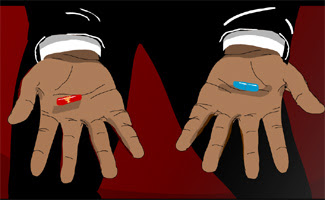Protests
“While most demonstrations and protest marches may not start with violence in mind, instances when they do turn violent are many. Illustrative of this are the violent clashes at WTO meetings in Seattle (1999) and Hong Kong (2005) and, more recently, the G20 meeting in Melbourne (2006).”I wonder how many street demonstrations started peacefully and ended peacefully instead?
Civil servants tripping over themselves is an entertaining sight to behold. With recent mounting and constant public pressure for the MIW to allow street protests, the MIW and its government increasingly cannot hold the line without losing even more political credibility.
Hong Kong, a modern Asian society with a strong CCP government in Beijing as its master, allows street protests. Singapore’s history is tainted with violent protests no doubt but the context for instigated and orchestrated mayhem was specifically present as a powder keg. The thin blue line to ban street protests including marches is purely political, not one of law and order concerns. As Sarek Home argues convincingly, if outdoor opposition GE rallies with thousands and thousands can gather and then disperse peacefully with the police professionally functioning at the fringes to maintain order, how reasonable is the fear of public protests? The idea of a designated public Protest Corner, for example at Speakers’ Corner, is one solution. But the government is not taking it up it seems.
I can think of many ways for the government to allow regulated protests and yet prevent it from turning violent and unmanageable. Maximum number of protestors allowed. Designated locations only and no marches allowed. Pre-planned routes for the protests if there are marches. Specific timing for the protests. Organisers to be held accountable if there are order problems. I am certain that the authorities and civil society groups can come to an agreement on the OB markers in public protests.
Or maybe this fear of protests is because the MIW do not trust in the professionalism of its police force? Is it that the police themselves are not confident in their ability to maintain order? I am sure many fellow Singaporeans would be mature enough to understand that violence is always possible when there are street protests despite the best of intentions from the majority of the protestors and the authorities. But I am also sure that the authorities will do what they reasonably can to prevent and subdue any anarchy. Just saying “No” and digging up historical episodes to weakly demonise all protests are increasingly unpersuasive for a supposed First World Government which wants to foster an open and inclusive society.
Oct 25, 2007
ST Forum Letter
Govt explains stand on ‘peaceful’ demos
A FEW letters in the press have argued that peaceful demonstrations should be permitted and even encouraged.
If there can be complete assurance that peaceful outdoor demonstrations cannot turn violent, the case for permitting such activities would be straightforward.
Those with violent goals typically do not declare their intentions upfront.
While most demonstrations and protest marches may not start with violence in mind, instances when they do turn violent are many. Illustrative of this are the violent clashes at WTO meetings in Seattle (1999) and Hong Kong (2005) and, more recently, the G20 meeting in Melbourne (2006).
When Singapore hosts such international events, we must account for the enhanced security threat level they attract. Our top priority must be to ensure the security and safety of the event and participants. We cannot afford to let our guard down or allow activities which undermine our security arrangements to address this threat by diverting and locking down forces for demonstration control and law-and-order functions.
The argument that such violent instances of demonstrations are occasional when compared to the total number of peaceful demonstrations is valid only if we are prepared to bear the costs of such outbreaks, however occasional.
The worst race riots in Singapore history began as peaceful processions. Hence even one such violent riot in Singapore with its attendant loss of lives, injury to persons, and damage to property is one incident too many. Deeper than the physical damage are the scarred relations between communal groups and the erosion of the sense of order and security which Singaporeans value and cherish.
The existing law on outdoor assemblies and processions therefore requires organisers to apply to the police for a permit which the police will evaluate for potential impact on law and order.
Indoor political events organised by Singaporeans for Singaporeans are exempt from having to apply for any permit. This is because the potential for disorder in an indoor setting can be more easily managed should it occur and the extent of damage more reasonably contained from the outset.
We will evolve our policies, as we have, over time but there can be no abdication of the need to always balance maintaining order and security for the larger society while adjusting the parameters to accommodate aspirations for different forms of political expression among some segments of our society.
Toh Yong Chuan
Deputy Director
International and Corporate Relations Division
Ministry of Home Affairs


No, the MiWs fear dissent. They fear that their “father-knows-best” mentality would be destroyed by peaceful protests. When there are protests, it means that people want answers from the government. And we know some answers can never never be put forward.
It will show that the 66.% mandate did not really happen.
October 28, 2007 at 1:40 pm
Mandate? What mandate.
66.6% of contested wards hardly constitutes even a slim majority.
October 29, 2007 at 11:37 pm
VERY GOOD WEBSITE!I LIKE IT.
November 14, 2008 at 5:35 pm